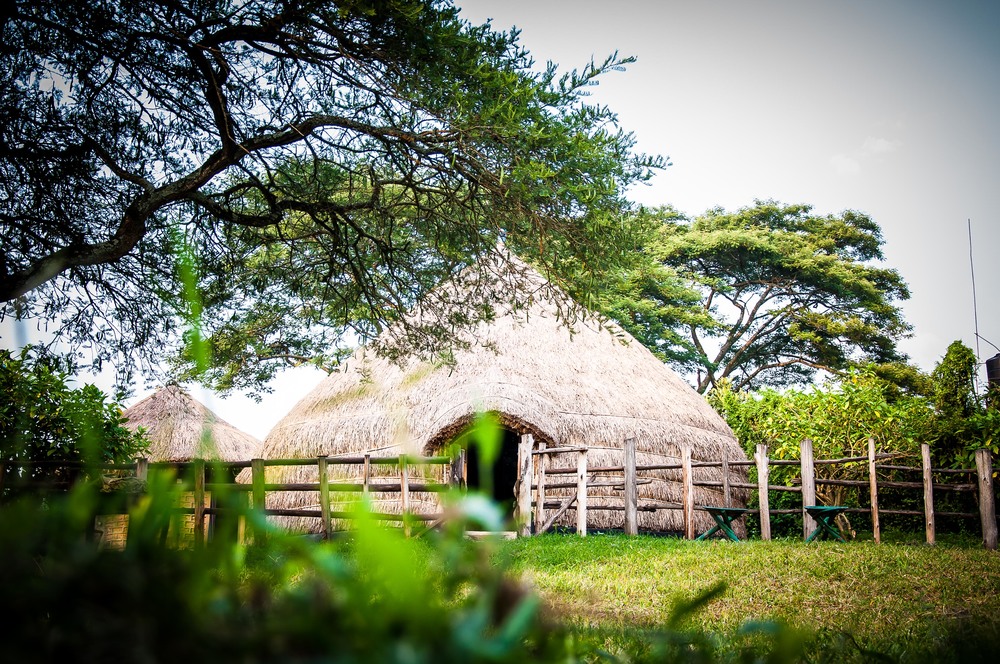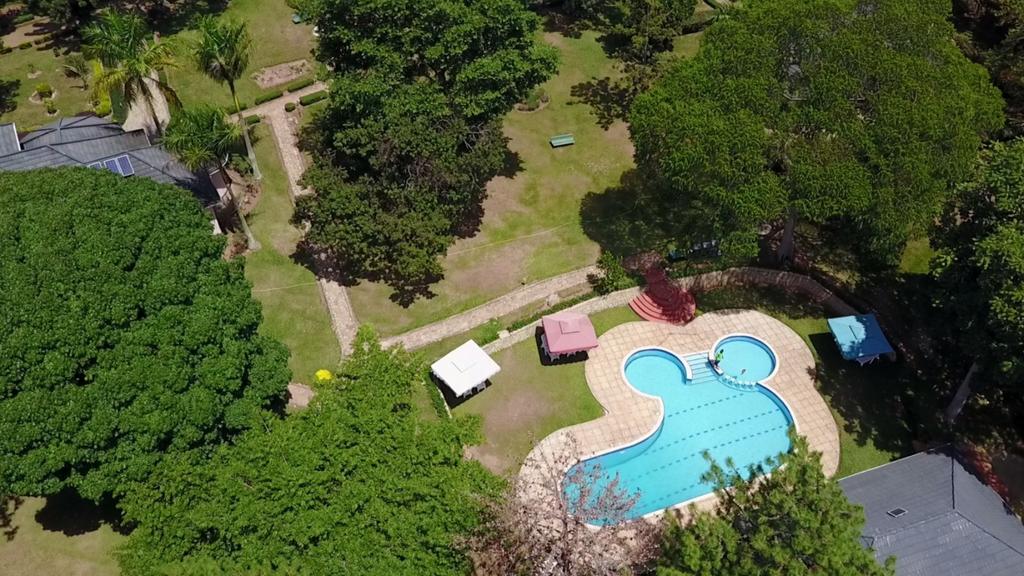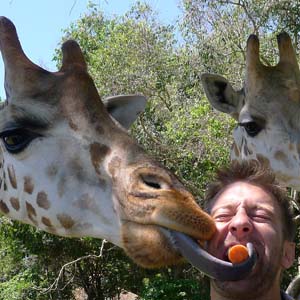This riveting activity takes you through the dense jungles of Bwindi Impenetrable National Park and Mgahinga Gorilla National Park and culminates in having a face to face encounter with the phenomenal mountain gorillas. This activity is one of the indispensable reasons as to why tourists visit the country and after spending one hour with these Giant Apes, it still leaves you wanting more. Although the process of trekking is strenuous, the moment you sight these exceptional and captivating creatures you will be exhilarated by their appearance and unique behavior. But as the saying goes “no gain without pain”, you can endure the process of trekking for the greater good. That’s why it is advisable to be physically fit before engaging in this captivating adventure.
Considered as a life time wildlife experience, gorilla trekking is entirely focused on conservation of mountain gorillas and their natural ecosystems.
Mountain gorillas are critically endangered apes and threatened to extinction by habitat loss, poaching, human diseases as well as conflicts, illegal wildlife trade and long term negative impacts of climate change.
Eco tourism is the only hope for conservationists to strike a balance between gorilla tourism and conservation. Part of the money generated after sale of gorilla permits goes into the local communities. People living adjacent to Bwindi Impenetrable Forest National Park and Mgahinga Gorilla National park in southwestern Uganda rely on natural forests. As a result, they’re helped with income generating activities and engaging them in tourism business and service provision. In the long run, gorilla habitats are kept off limits without compromise to agricultural activities. It’s hoped to reduce poverty levels as well as bring locals attention to conservation.
Why Cheaper and discounted gorilla permits
Uganda has relatively cheaper gorilla permit than Rwanda at the same time permits are easier to obtain because of high availability with two gorilla trekking national parks.
In Uganda during high season in the months of December to February and Jun to September, a gorilla permit is at $600. Uganda wildlife authority reduces its permit price from $600 to $450 in low season from March, April, May and October to November. Contrary to Rwanda, a gorilla permit costs $750 and remains constant even in the low season.
During the low season, many visitors tend to avoid rains. As a result a there will be few people on gorilla trek. Up-market lodges in and around Bwindi also offer discount room rates, so visitors enjoy luxury at low costs.
Large number of habituated groups of gorillas than Rwanda and Congo
Bwindi forest, the 331 sq km UNESCO world heritage site protects 400 gorillas which is half of the entire mountain gorilla population estimated at 880 individuals.
The park has more habituated gorillas than Rwanda and DRC combined. There are 15 habituated gorilla families and 12 are available for tracking by visitors. The other two are meant for research and habituation process is a new experience not found anywhere else than in Bwindi forest. Visitors spend more time up to 4 hours a day observing semi-habituated gorillas.
Bwindi forest has four gorilla trekking centers. Buhoma the park headquarters in the north has 3 gorilla families, Rushaga in the south has 5, Ruhija has 3 and Nkuringo has one.
Visitors who trekked in more than one, found each gorilla section unique and not to say gorilla families have completely different features. Some have twin baby gorillas such as the ones in Nyakagezi family in Mgahinga and Nshongi in southern Bwindi while others have many individuals. Kahungye gorilla family in Rushaga south of Bwindi has 26 while Kyaguriro has 21 members.
Bwindi forest has thick vegetation and steep altitude which requires fitness. However; visitors can choose to take easier treks. It’s possible to book for specific gorilla family. However, at the start of the trek visitors are encouraged to inform the guides about their fitness and trekking capacity in order to be allocated to groups of gorillas that are easier to locate. You hire a porter to carry your backpacks and walk comfortably to the gorillas.
Safety and secure gorilla treks
Although a mature silverback gorilla weights up to 400 pounds, and stands approximately 1.7 meters on two legs, it is by far peaceful animal. Gorilla treks are very safe, armed rangers, guides and trackers will take you and ensure clear observations at a distance of 7 meters.
Guides also share their knowledge of the forest and gorilla behavior. You gain understanding of the apes including identification of plants they eat as well as how they groom, rest and sleep. All that within one hour spent with gorillas? Seeing gorillas has got be a memorable, delightful and an experience of a life time.
Diverse experience beyond gorilla trekking –the gorilla highlands
In addition, there are bonus lakes not far from Bwindi or Mgahinga parks to chill and relax after a tiresome trek such as Bunyonyi and Mutanda with lake side resorts. Staying there has an additional experience to your gorilla safari in Uganda including breathtaking scenery, activities like traditional fishing, canoeing and village island visits which may not be available in Rwanda.
Mgahinga Park has one habituated gorilla family also offers other activities such as golden monkey tracking. The bamboo forested three dormant volcanoes presents volcano hiking opportunities. Mt. Muhabura, Mt. Gahinga and Mt. Sabinyo range between altitudes of 2,227 to 4,127 meters above sea level.
Bwindi is highly rich in biodiversity and presents a diverse adventurous experience. The rare afro-montane vegetation which survived the ice age has numerous streams and beautiful waterfalls which act as a water catchment area. There are about 346 birds, 10 primate species, 120 mammals, and 202 butterflies, 27 species of reptiles including frogs, chameleons and geckos.
Visitors, on a gorilla safari who want to do more than seeing gorillas, Uganda should be your choice of destination. The savannah parks, Lake Mburo, Queen Elizabeth national park offer big four mammals as well as chimpanzee tracking in Kibale forest national park.
The Rwenzori mountains offer world class mountaineering. The permanent snow equatorial peaks, the 3rd tallest in Africa are the furthest source of the world’s longest river the Nile. In Murchison falls national park, the Nile river plunges over a 40 meter cliff to create the world’s strongest waterfall.
Jinja, the adventure capital of east Africa is located east of Kampala. At the source of the Nile you can enjoy white water rafting, kayaking and bungee jumping, horseback riding and visit waterfalls.
Accessibility
Road transport to Bwindi
Thinking about the long journey to south western Uganda for gorilla trekking, it’s okay the 500 km route and 8-10 hours drive is admirable and visitors will have a great time. There are en route attractions and the rural country side will offer you a memorable experience. You’ll have fun at the Uganda equator line. There you do experimentation, enjoy coffee, shop a souvenir and take photos. Mpampire traditional drum making village is worth to visit to see the local skillful craftsmanship. Another nice stop at Igongo cultural center and museum in Mbarara, the tourism hub to western Uganda offers traditional lunch with a touch of Ankole culture. The place is not crowded; you can visit the museum or walk in the gardens before driving further to Bwindi.
Now the Mbarara-Kabale road is tarmac but as far as sightseeing, the Kigezi terraced rolling hills are scenic. No wonder you’re in the Switzerland of Africa.
Fly in safaris
Visitors with limited time, fly in safaris are capable of handling your travel needs and get you to southwestern Uganda within 2 hours. Make sure to book your flight in advance since the available scheduled charter airlines also get busy operating fly in safaris to other safari park of Uganda.









